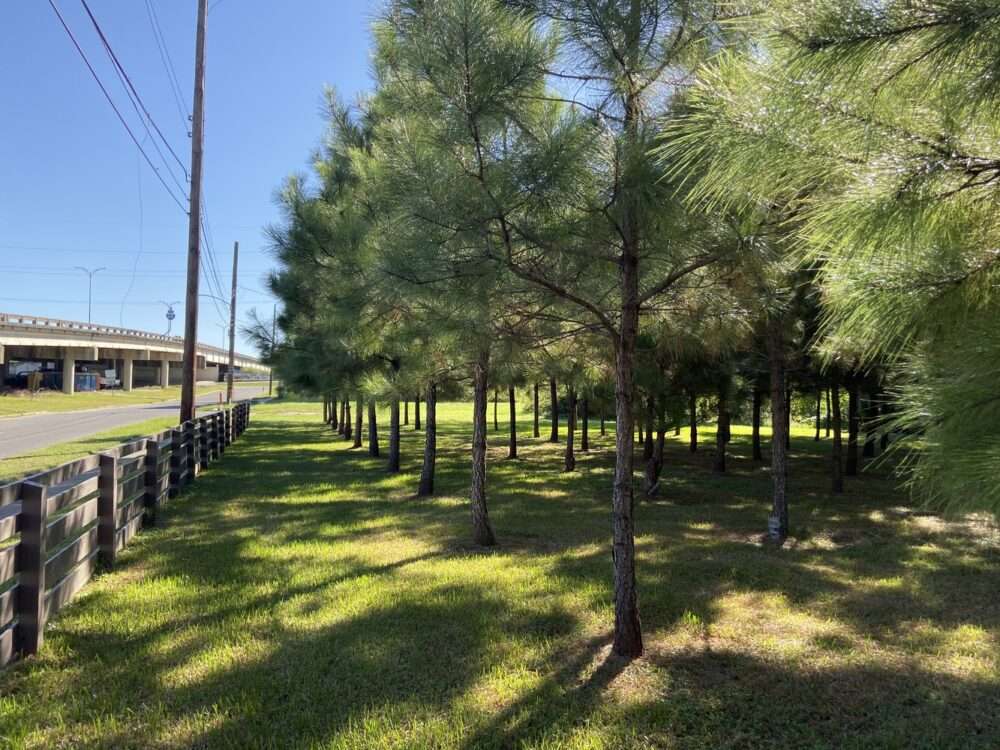New Orleans experiences the worst urban heat island effect in the country, with temperatures about 9 degrees Fahrenheit warmer than nearby normal areas.
The city also lost more than 200,000 trees from Hurricane Katrina, which reduced its total tree canopy to just 18.5%.
The nonprofit organization Sustaining Our Urban Landscape (SOUL) has partnered with landscape architects Spackman Mossop Michaels (SMM),
To create a highly accessible, equity-focused city reforestation plan that provides a roadmap for achieving a tree canopy of 24% by 2040.

But more importantly, the plan also seeks to equalize the canopy,
so at least 10 percent of all 72 neighborhoods are covered in trees.
Currently, more than half of neighborhoods are under the 10% target.
Some communities in the city are almost entirely concrete and asphalt and have canopies as low as 1%,
while others, like the popular Garden District, have nearly 30%.
This leads to an unfair distribution of heat risks. With Hurricane Ida, the main cause of death was not flooding but heat.

The storm caused power outages, so people were in their homes without air conditioning.
The New Orleans reforestation plan offers a new,
fairer model for reducing dangerous heat extremes – the number one climate killer – and flooding, while also reducing energy use.
Traditional urban reforestation plans focus on achieving a gross canopy percentage,
and there is often an equity component.
But this plan is so focused on equity that it frames all objectives.

GIS data analysis
While SOUL organized four roundtable discussions with local stakeholders from the public, private,
and not-for-profit sectors, and seven community meetings.
The company was contracted to analyze the complex GIS data collected by SOUL,
facilitate more meetings around the city, and develop the plan.
Landscape architects also know the challenges and how to intersect with utilities.
And help facilitate concrete conversations with stakeholders,
by examining city regulations and coming up with recommendations for making these systems work just a little bit better.
The goal was to make the tree planting process smoother and easier.
The company’s experience sharing with the SOUL community also helped frame the conversations.

Trees increase property values
Research shows that trees increase property values.
But SMM has not heard concerns that more trees can lead to gentrification or displacement.
The questions revolved around: who would maintain the trees in the right-of-way?
Where will the maintenance money come from?
In the Historic Gardens District, tree roots can turn sidewalks into jagged little mounds, making them inaccessible.
In other older parts of town the sidewalks are very narrow, leaving little room for trees.
How will the city fit in more?
The plan outlines detailed steps that SOUL,
other organizations and the city can take to build capacity and intensify tree planting to meet the 2040 goal.

But before scaling up, the plan calls for a full year of community participation.
This will help educate communities about the benefits of trees and lay the foundation for future planting programmes.
In five diverse underserved neighborhoods, pilot tree planting efforts will be launched in the coming years.
Planting more trees would be fairly easy in some of these neighborhoods, because there are open green spaces available.
In other, more difficult neighborhoods, which already have low tree canopies,
Additional funds and support will be required to dismantle and remove the concrete rights-of-way.
The biggest impediment to implementing the plan is a lack of funding. In New Orleans,
the Department of Parks and Parkways is severely underfunded.

The plan is an advocacy tool – it shows what can be done with the extra money and how to achieve it.
This is why the team focused on making the plan easy to understand.
This plan also offers an approach that other landscape architects can apply.
For more architectural news


 العربية
العربية